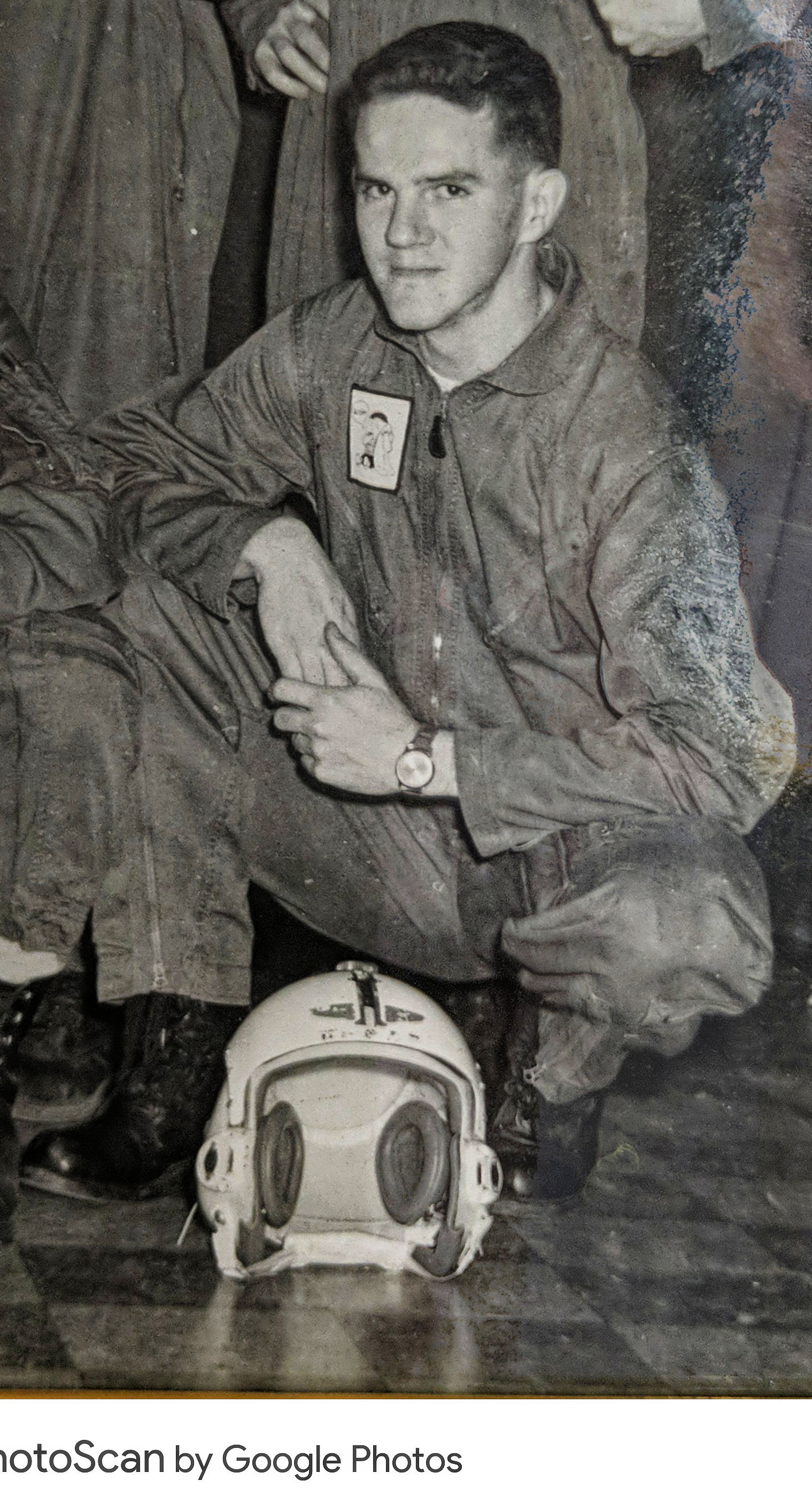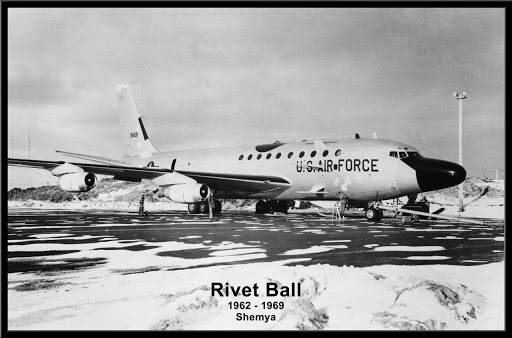

 |  |
The time spent on the island of Shemya was unique. We lived in the hanger 24/7 where RIVET BALL was parked, always wearing our flight suits. When there was an ICBM launch, a klaxon would ring and we would literally "scramble," getting on the aircraft and taking off within just a very few minutes. There was a kitchen in the hangar where we prepared our own meals. Most of the between meals and missions time was spent playing cards, usually poker with the SAC enlisted men who were permanently stationed there. While the SAC flight crews rotated from Eielson, the SAC maintenance and support personnel were permanently stationed on the island. It was a unique unit in that nearly all the enlisted men were high-ranking, mostly Senior and Chief Master Sergeants (E8 and E9). These men were all what we commonly referred to as FIGMO (F**ck It, Got My Orders). Nobody wanted to be stationed on the Island, so SAC HQ was in the habit of handing out assignments to Shemya to those who were just about to retire. The "First Sergeant" of the detachment at Shemya was an E6 (Technical Sergeant). The E8s and E9s slapped the lowest ranking man with the job of First Sergeant. These FIGMO sergeants were very serious poker players. Once, while playing poker with them, I shuffled the cards and placed them on the table to be cut. Right at that moment, an earth tremor hit and the cards when flying off onto the floor. Earth tremors were a frequent happening on Shemya.
Another memory from Shemya was walking on the beach and picking up glass balls washed ashore from Japanese fishing nets. On one of these walks, a fog rolled in and one could not see two feet in front of one's self, even with a 30-knot wind blowing. It was the thickest and fastest fog I've ever experienced.
The rotations from Eielson were generally once every week or two. On one of these TDYs, our team got stuck on the island for an extended period because of weather. Finally, a tanker was able to land and there was a VIP on board, the commanding general of the 5th Air Force from March Air Force Base in California. The general was visiting 6th Strategic Wing sites. I and my "team" were delighted to see the tanker land and we scurried out to get on board. I was first to start up the ladder which led up to the big cargo door on the side of the tanker. As I approached the top of the ladder, there was a Chief Master Sergeant waiting, dressed in a perfectly starched flight suit adorned with all sorts of accoutrements and wearing spit-shined boots.
"Who are you," the CMSgt asked me?
"Who are you," I asked?
"I'm the loadmaster," he answered. "Let me see your flight orders!"
Well, we never bothered with flight orders for good reason. The TDYs to Shemya from Eielson were always fraught with last-minute changes due to weather or personnel issues. The 6985th Security Squadron administrators got tired of constantly amending flight orders and other necessary forms associated with the TDYs and decided to just wait until the TDY was completed before doing the paper work. We all knew the Pilots and they knew us so there was never an issue related to "flight orders" or a "manifest."
"We don't do flight orders," I responded.
"Are you on the manifest," he asked?
"No, we don't do manifests," I answered.
"Well, if you don't have flight orders and you are not on the manifest then you are not getting on this aircraft," he barked.
I should probably explain here that, for good reasons, we never wore any rank or insignia of any kind on our flight suits. Our flight suits were bare of any decoration and we simply wore soft hats ('cunt hats' they were called) and none of us every spit shined our boots. We were a motley-looking bunch. I'm sure we looked to the loadmaster like vagabonds.
Deciding that discretion was the better part of valor, I decided to just go back down the ladder and wait for our pilot to show up. Within a few minutes, a staff car pulled up with our pilot, co-pilot and navigators. I walked over to the pilot and told him about the crisply dressed loadmaster. He said, "I'll take care of him. Just follow me."
So, I followed our pilot up the ladder and, when he got to the top and was smartly saluted by the CMSgt loadmaster, the pilot asked,
"Sergeant, do you know why this aircraft came out here?"
"Yessir," he replied. "To bring the general."
"Wrong! This aircraft came out here specifically to bring these guys back to Eielson," he said, pointing at me and the rest of our team behind me. "Your general just caught a ride with them."
I wish I had a photo of the look on the loadmaster's face at that point.
On the trip from Shemya back to Eielson, the loadmaster kept walking back and forth, glancing sideways at the bunch of us sitting in web seats along the fuselage. I don't know if he ever found out what the score was.
On January 13th 1969, RIVET BALL ran off the end of the runway at Shemya and broke in half. All 18 crew members survived, among them Gene Willard who was in my Hebrew class in 1969/70. June 5th 1969, RIVET AMBER broke apart in mid air over the Bering Sea and was never found.
https://en.wikipedia.org/wiki/Boeing_RC-135#Accidents_and_incidents